[pmb_print_buttons]
Stavanger is known affectionately as “Oljebyen” – the oil capital. The petroleum museum (with dinosaur on the roof – as you do!) is located almost adjacent to our moored ship. The morning tour boards the coach on the quayside, drives a few hundred metres round the one way system and parks very slightly closer to the museum than is Silver Moon. We could have saved 10 minutes by walking! The museum had been opened early especially for us which meant we had the place to ourselves (and another tour party from P&O’s Iona). This museum is superb and warrants much more time than our tour allowed.
It covers, as might be expected everything from the historical formation of oil and gas right up to modern day technologies employed in the offshore industry. The scariest bits described life on the early rigs. It looked a seriously dangerous operation with men hanging in mid air while fixing drill strings …

The displays showed how saturation diving (where divers lived at high pressure for extended periods to avoid the need for frequent and time consuming decompressions) was replaced first by manned submersible and subsequently autonomous vehicles …
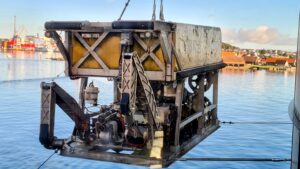
… controlled remotely from hi-tech control rooms which are now often located onshore, miles from the rigs!
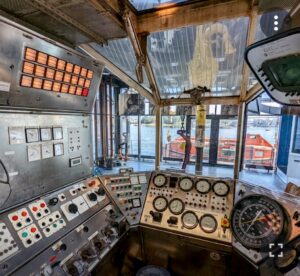
The scale models of the rigs were superb (and numerous!). (And difficult to photograph!)
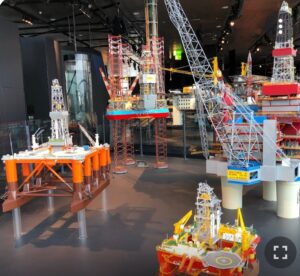
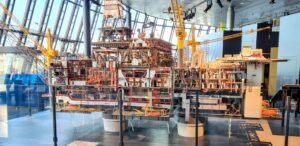
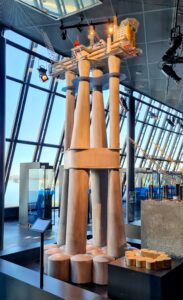
The discovery of oil in the Norwegian sector of the North Sea nearly didn’t happen. (Well, i guess it would have, sooner or later!) Phillips were drilling a planned series of 38 wells. By the summer of 1969, they had drilled 37 dry wells. They wanted to pack up and go home, but the rig, the Ocean Viking, had been paid for, so it was a no-cost option to finish the contract. Well Well! Well 38 hit so much pressurised oil it had to be closed off and re-drilled 1,000 m away. Ekofisk, close to the point where Norwegian, Danish and British maritime boundaries meet, had been discovered. The rest is history!
The most brilliant concept that is promoted within the museum (as well as by our guides) is that of the Government Pension Fund Global. This is also known as the Oil Fund, and was established in 1990 to invest the surplus revenues of the Norwegian petroleum sector. It has over US$ 1.19 trillion in assets, making it the world’s largest sovereign wealth fund. In December 2021, it was worth about $250,000 per Norwegian citizen. What good planning, the Norwegians have saved and invested profits for future generations! The fund has also been used to upgrade the transport infrastructure. It has funded countless bridges and tunnels! Brilliant!
I’m sure the UK Government has got a secret oil fund to secure this country’s future!
Or maybe not!
Our next stop was at an Iron Age farming settlement at Jernaldergården. But as we drive along the bank of Hafrsfjord we pass a monument. Three 10 m tall bronze swords. planted in the rock.
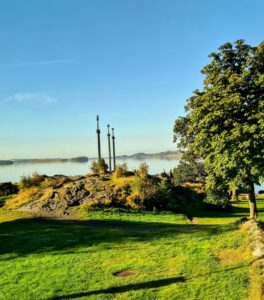
This is “Sverd i Fjell” (literally “Swords in Rock”). It commemorates the historic Battle of Hafrsfjord which took place there in the year 872, when King Harald Fairhair gathered all of Norway under one crown. The largest sword represents the victorious Harald, and the two smaller swords represent the defeated petty kings. The monument also represents peace, since the swords are planted into solid rock, so they may never be removed.
We were told a lot of stories about the Viking exploits but I’d say most of us were having problems remembering what we had had for dinner last night – never mind the happenings of over 1200 years ago! But it kept the guides busy!
Now the farm.
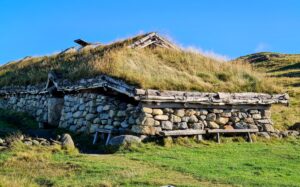
Reconstructed from the tiniest remains, the settlement consists of several long houses (some of which have yet to be excavated).
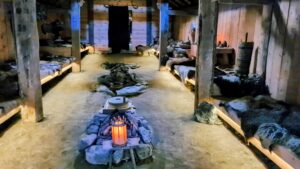
The building apparently was made up of an external covered storage area, an internal weaving room, the main living room (pictured above), a dormitory and then a livestock area. Sequentially and in an uphill direction. Personally, I think keeping the animals at the downhill end might have made more sense, what with drainage and all.
Our guide was dressed entirely (although he wasn’t questioned about his underpants!) in garments woven from wool using spinning devices and looms like those allegedly available in the Iron Age.
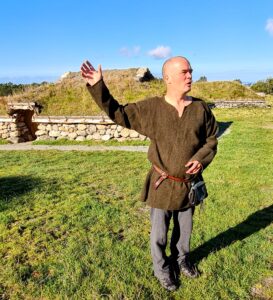
The guides have been extolling the virtues of electric transport. Many ferries are being converted to run on electricity (or built new) but there are charging difficulties with boats which are on the move most of the day. Everyone knows about electric cars, and although we saw very few public charging points, most Norwegian houses outside the very centre of towns have plenty of space on their properties to charge at home. And we saw lots of cars wired into houses. But we are on an electric bus (the first one I think, although it’s our last bus of the cruise!). Very posh, smooth and quiet.
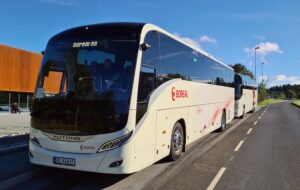
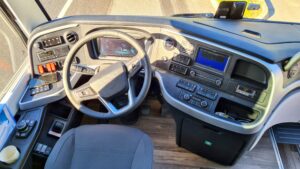
It’s true to say that a fair bit of the luggage space was taken up by batteries – but I was assured that the bus could transport “enough” luggage for the passenger load. But then again we probably had one rucksack per couple, on average!
The next stop of the tour was at the top of the hill behind the farm which would likely have been their lookout point back in the day. Spectacular views over Stavanger and the surrounding area from the viewing platform at the communications tower at Ullandhaugtårnet.
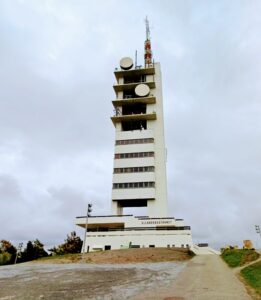
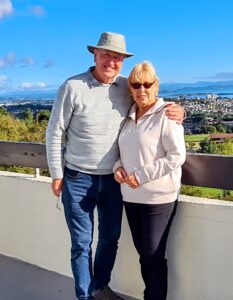
Back in Stavanger we are given a guided tour of the old town. Narrow streets with wooden houses.
Apparently Mr and Mrs Johansens started a trend. They painted their woodwork in very expensive red paint to show how wealthy they were. The neighbours, in trying to keep up with the Johansens, gradually did the same. So the Johansens changed to even more expensive white paint. Now almost everyone is keeping up and doing the same. One last trick in this keeping up war developed. The traditional weather-boarding is fixed horizontally so it is relatively easy to replace rotten timber near the ground. To demonstrate real wealth, the Johansens started fixing boards vertically. “We have so much money we can afford to replace all the woodwork if it starts going bad at the bottom!”
Stavanger is one of the Norwegian towns that encourage street art. I seem to remember that Bodø in Northern Norway did as well. Our guide pointed out two types – artistic (welcomed) and graffiti (not). Here is an example of both together …
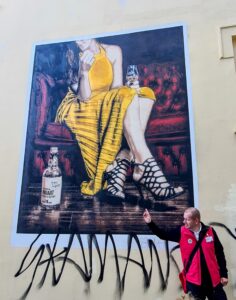
The main street through the district was beautifully adorned with pot plants …
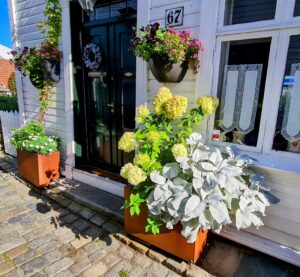
… and the houses were all painted in white or grey – it’s required by a local bylaw. However, doors and windows are considered internal features and escape the requirement!
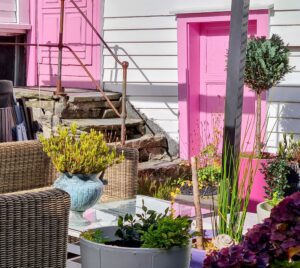
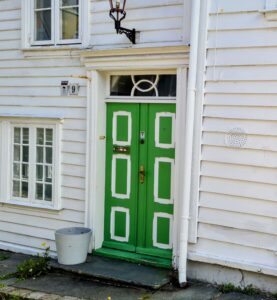
And one or two houses had sneaky mirrors fixed outside their windows so nosey folk could see what was going on up and down the street!
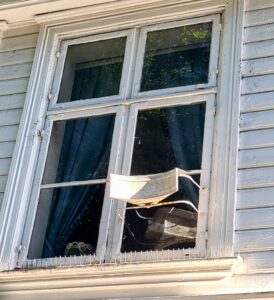
So, there we have it. Norwegian fjords have been visited. Now there’s just the small matter of two days crossing the North Sea!
After a spookily quiet night, we had breakfast on deck.
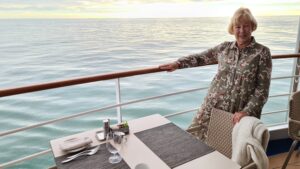
The only significant waves were being made by our wake! Like I said – spooky, but very acceptable! And as the second morning dawned we were docking in Southampton.
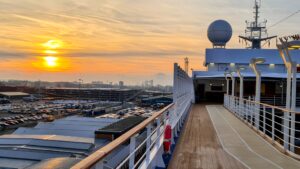
Night stop-over at Tarrant Keyneston with Jeremy and family (which, with hindsight, might not have been the best plan!) and home to find we had contracted Covid. Still it was a brilliant cruise with some lovely people – shame about the virus thingy!
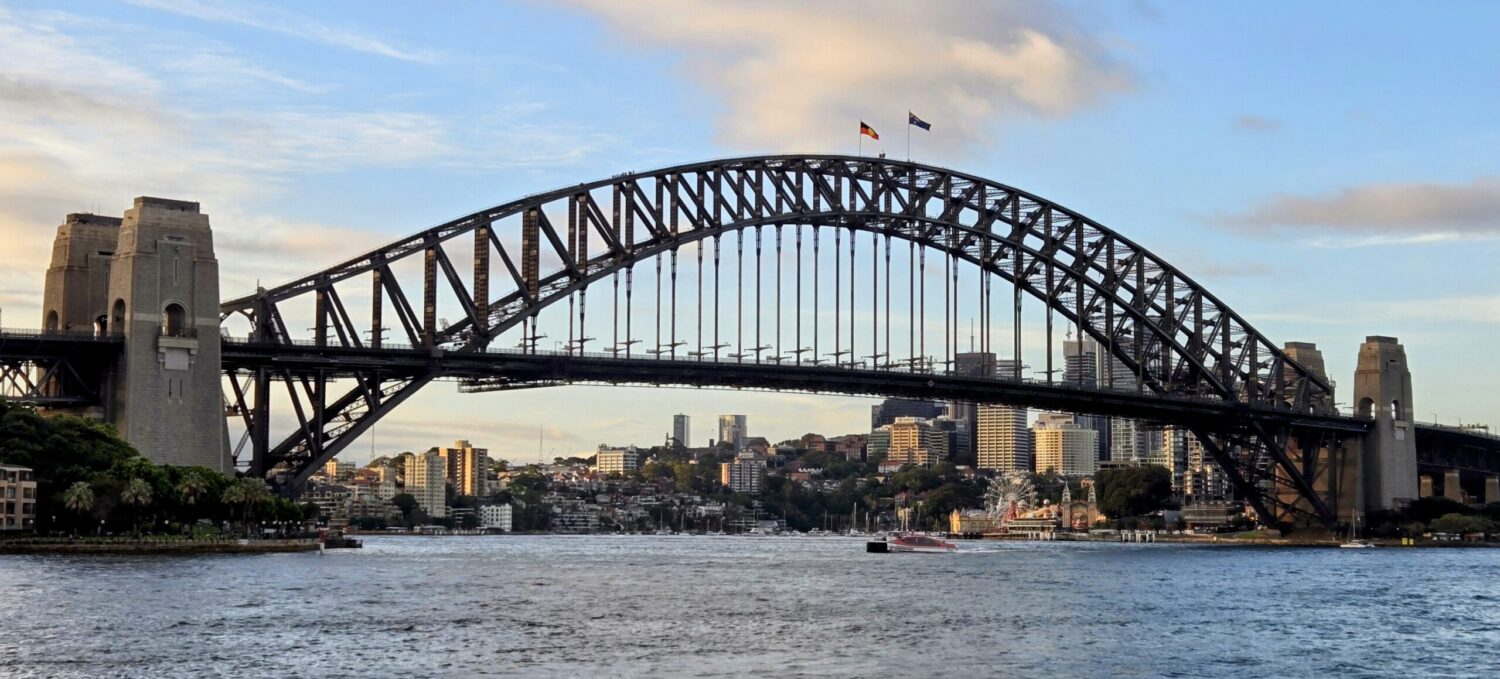
What an end to a great trip! At least you didn’t miss out on any travel, and the weather was mostly kind, by the look of your photos. I guess you are now getting organised for your trip to Australia later this month.
Fascinating trip. Glad to see you made it home, relatively unscathed. Bloody Covid.
Look forward to seeing you in Australia.